How to Create a Social Media Funnel that Converts
written by John Hodgkinson | Author Tips and Tricks
April 30, 2023
Many brands incorporate social media into their marketing strategies to generate traffic and leads that keep their business moving. You are less likely to encounter an online business that doesn’t use social media as a marketing medium than one that does. However, results vary across industries and companies. A lot of those differences can be […]
The post How to Create a Social Media Funnel that Converts appeared first on .
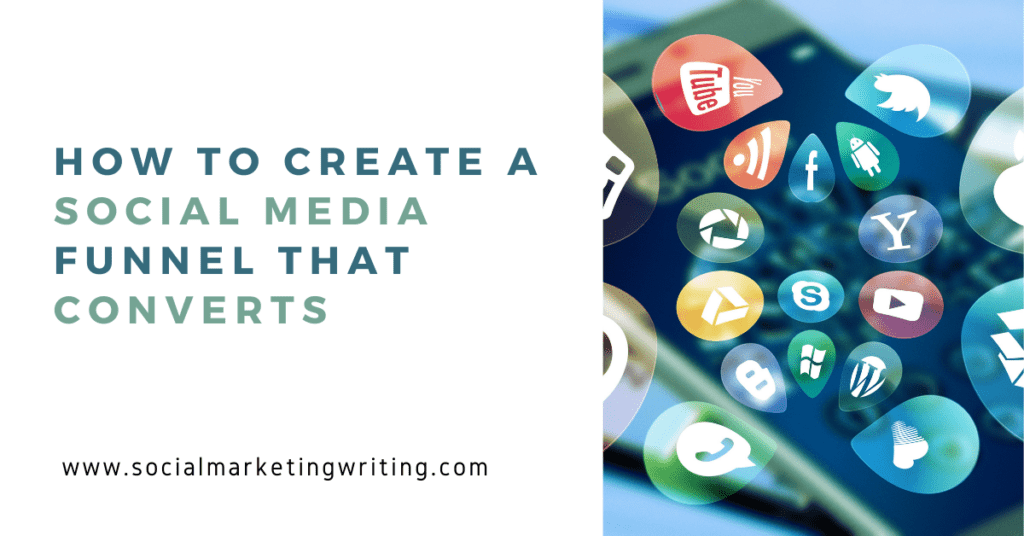
Many brands incorporate social media into their marketing strategies to generate traffic and leads that keep their business moving. You are less likely to encounter an online business that doesn’t use social media as a marketing medium than one that does.
However, results vary across industries and companies. A lot of those differences can be attributed to the way businesses use social media and content marketing to promote their products and services. A business must guide customers from a place of awareness to the point of purchase (and beyond).
If you want to make your social media a more effective digital marketing medium, you need to do more than just post content. Instead, you need to consider different touchpoints and marketing channels to bring you a step closer to converting your ideal customer. By creating a social media funnel, you can develop content for each step of the customer journey.
Let’s look at the different stages of the social media funnel and discuss how you can design a funnel that yields maximum results.
What is a Social Media Marketing Funnel, and How Does it Work?
A social media marketing funnel encourages the conversion of potential leads into customers on social media. It involves several stages of customer engagement with your brand, from where they learn about your brand to the point where they purchase and are comfortable making referrals to your business.
With careful analysis, a social media sales funnel can help you understand:
- Your buyer’s intent and what motivates potential leads to explore and patronize your business;
- The marketing tactics that work best for customers at different stages of the customer journey; and
- Different ways to reach out to your audience by creating different types of content that takes them to the next step towards making a purchase.
With these in mind, how does a social media funnel work? Most non-social sales funnels look like the one below:
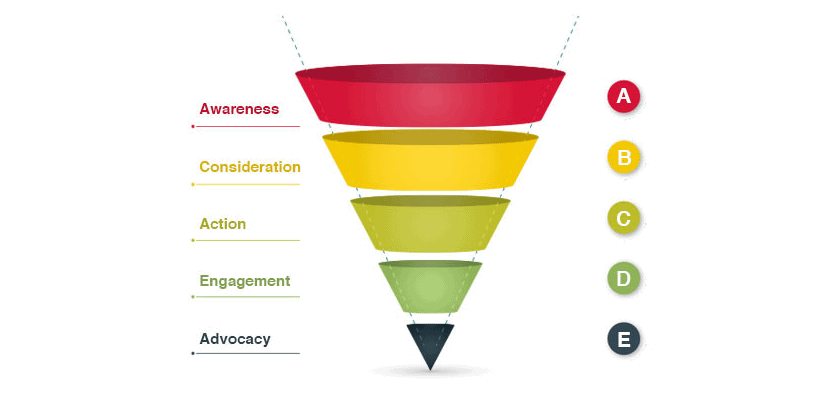
However, the interactive nature of social media makes it complicated to map the buyer’s journey. Different customers can have different experiences with a single brand on social media. It looks more like a spectrum of actions, and a customer can jump from one part of the funnel to another in just a few clicks:
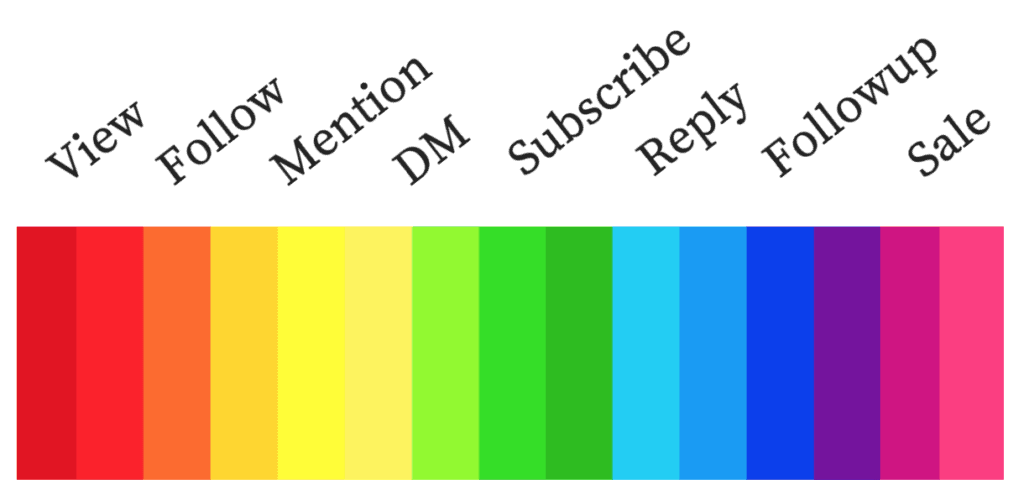
As a marketer, you’ve probably seen this happen often. The good news is that you can still use a traditional sales funnel in the context of social media. The challenge lies in incorporating different types of user engagement into each sales funnel step to help you reach the goals of your marketing strategy. Let’s look at each stage and how you can create content and increase engagement and conversions with each step.
Awareness
Every marketing funnel starts with the awareness stage. Here, a potential customer can discover your business for the first time. Your job is to provide the necessary information that gets them invested in what you already offer.
Rather than trying to close an instant sale, focus on creating different types of content suited for leads at the top of the funnel. Usually, the people at this stage stumbled upon your business on social media because they have an interest and are actively searching for products or services in your industry.
Hence, the objective in the awareness stage is to attract those leads using brand awareness strategies, and the goal is to show them how your business can solve their problems.
To do this effectively, you must understand your customer persona. This will allow you to target and build an audience that you can communicate with effectively. The idea here is to offer valuable information that keeps people invested and willing to move to the next funnel stage.
Social media is already an excellent medium to share content that attracts attention. You can leverage it by answering audience questions, posting tutorial videos, or streaming webinars or promotional live videos.
For example, Absolut uses tutorial videos to show users that it is a good drink for mixing:

The video teaches viewers how to make a simple Citron Lemonade cocktail with standard bartender equipment and Absolut Vodka. Although this is an Instagram tutorial video, a link in the account’s bio directs visitors to Absolut’s YouTube page, where they can watch more video marketing content.
In cases where you’re trying to build an audience for a new product and have the budget for it, you can invest in paid social ads to increase brand awareness and reach. Alternatively, you could try influencer marketing to promote your product and drive traffic to your social business page or sales landing page.
Consideration
As potential customers become aware of your products, they start moving through the social media funnel. At this point, begin to consider if your products answer specific customer pain points. They will also compare your brand against its competitors in terms of reviews, features, and customer service.
How do you convince and convert potential customers at this stage? The consideration stage is all about showing value. You show value by creating content that highlights the benefits of your products.
Types of content that are effective in this stage of the funnel include blogs, social media videos, infographics, and even white papers that present your product being used to solve real-life problems. Detailed information like these assures potential customers you’re the best option, subsequently building confidence towards your brand.
To reach your audience in this phase, you’ll have to retarget users who have recently come across or interacted with your brand so the message sticks. Alternatively, if you cater directly to consumers, sharing webinars or video demos like Anthony’s is a superb way to remain in the minds of your audience.

Anthony’s Goods shares a smoothie tutorial on Instagram using their products. They invite their audience to take action by shopping for the same ingredients on Amazon or their website, pushing them to the next stage of their social media funnel.
Because potential leads can experience the impact first-hand, sharing tutorials and other kinds of informative social media content is a fantastic way to convince your audience to go for your products.
Action
In this stage, your leads are ready to buy from you. It also means you’ve successfully built a good relationship from the start, and now, they see a reason to trust you.
As we explained, the phase leading to the action stage is sometimes short, primarily if your business operates in a high-traffic niche like consumer goods. On the other hand, other niches have a considerably longer sales process, and potential customers will require more persuasion and nurturing in the funnel to spur them to action. Social proof and testimonials from other customers are often key motivators for action.
But before you convince them with social proof, you need to track your performance in the previous stages and determine whether your content has been successful up to this point.
Thankfully, many social platforms have analytics built-in. Check critical metrics using social media engagement tools to see how you measure up before launching your next social media campaign where you can utilize social proof. If you can, offer discounts for new customers too.
Here’s an example of a brand using social proof and incentives to encourage shoppers to buy from them:
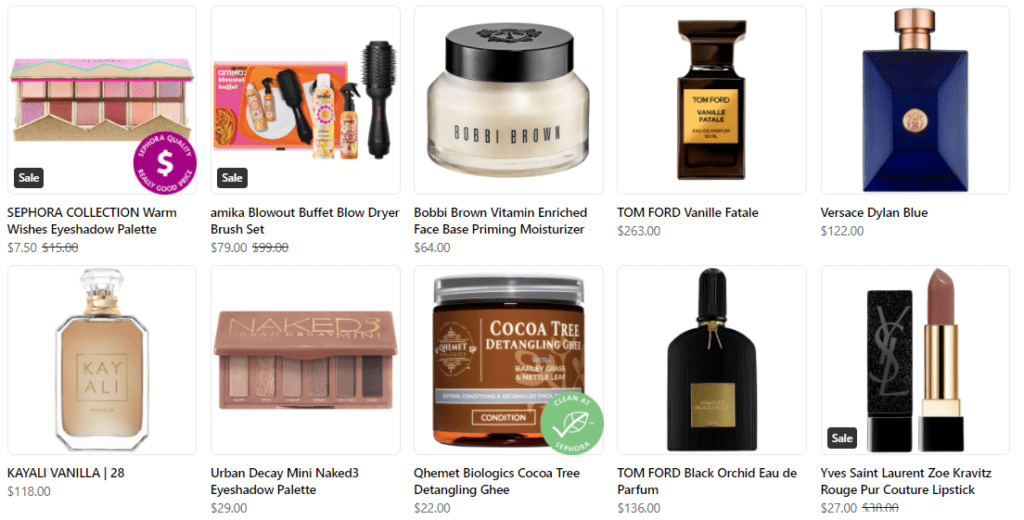
Sephora’s Facebook account does not just contain beauty tips; it also acts as a virtual storefront. Some of its content links back to product pages.
In the example above, Sephora’s Facebook Commerce page has a comprehensive list of products, some of them are marked as “Sephora Quality Really Good Price” or “Clean at Sephora”. They help convince customers that the products Sephora sells are not just reasonably priced; they’re also friendly to the environment. These badges seal the deal with bargain hunters and earth-conscious consumers, respectively.
Engagement
Congratulations! You’ve acquired a new customer. Now, it’s time to retain them.
The engagement stage in the social media funnel is all about grooming customers to be lifelong enthusiasts of your brand. They’ve made a purchase, alright — but it doesn’t stop there. Constant interaction with your new customers nurtures the relationship and shows them that you care.
Consider how you can include buyers in your social media community. Build engagements using trends to reassure your customers about the authenticity of your brand. For example, you can use hashtags on Twitter or Instagram to engage your customers and get them talking about your brand.
Remember Coca-Cola’s #ShareaCoke campaign? It was all over different social media platforms, including Facebook, Instagram, and Twitter. The hashtag is so effective that people still use it now.
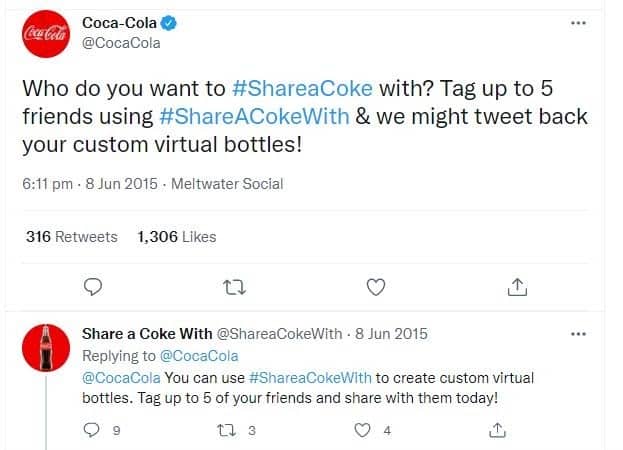
The campaign’s purpose was to create a deeper relationship with consumers through engagement. By changing the Coca-Cola product packaging to show typical first names, the brand created a community of loyal consumers.
You may not be able to pull something so over the top for lack of budget. Nevertheless, aim to personalize the marketing campaign at this stage, as 80 percent of consumers are likely to buy from brands that offer personalized experiences and the retention rates for these brands are higher than those that don’t offer personalization.
Advocacy
While many people think action and engagement are at the bottom of the funnel, the advocacy phase of the social media funnel takes engagement one step further. It’s dependent on how customers become comfortable enough with your brand to talk about them to people.
While the engagement stage is where you create lifelong enthusiasts for your brand. The advocacy stage is where you convert your current customers into active brand advocates and community builders.
To achieve this, you need to encourage customers to spread the word about your brand and leave their reviews and testimonials of your brand. For example, Rothy uses referral discounts to encourage customers to spread the word and tell people about their brand.
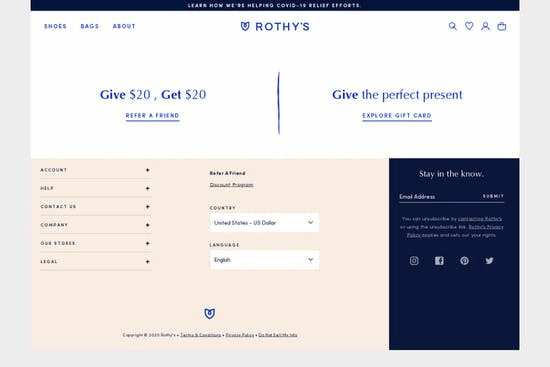
This phase should prioritize using existing customers to provide quality content to drive traffic and influence a larger audience. With that in mind, go ham on nurturing existing customer relationships, as they will, in turn, help grow your brand.
Bottom Line
A social media funnel is an effective way to engage your target audience and build trust around your brand.
It might get overwhelming at first, but it’s necessary to understand your customer persona to utilize this funnel fully. Also, keep track of your customer’s purchase journey to know what marketing content suits them at a particular stage of the funnel.
Again, every prospect can be a paying customer with the proper steps. Therefore, invest in brand awareness campaigns to get potential leads at the top of the funnel and nurture them all the way through. Provide value through the content you dish out at every stage while subtly positioning your brand as the solution for their problems.
By optimizing your social campaigns to fit your customer’s journey at every stage in the funnel, you don’t just create loyal customers, but a community of customers who also promote your brand to others.
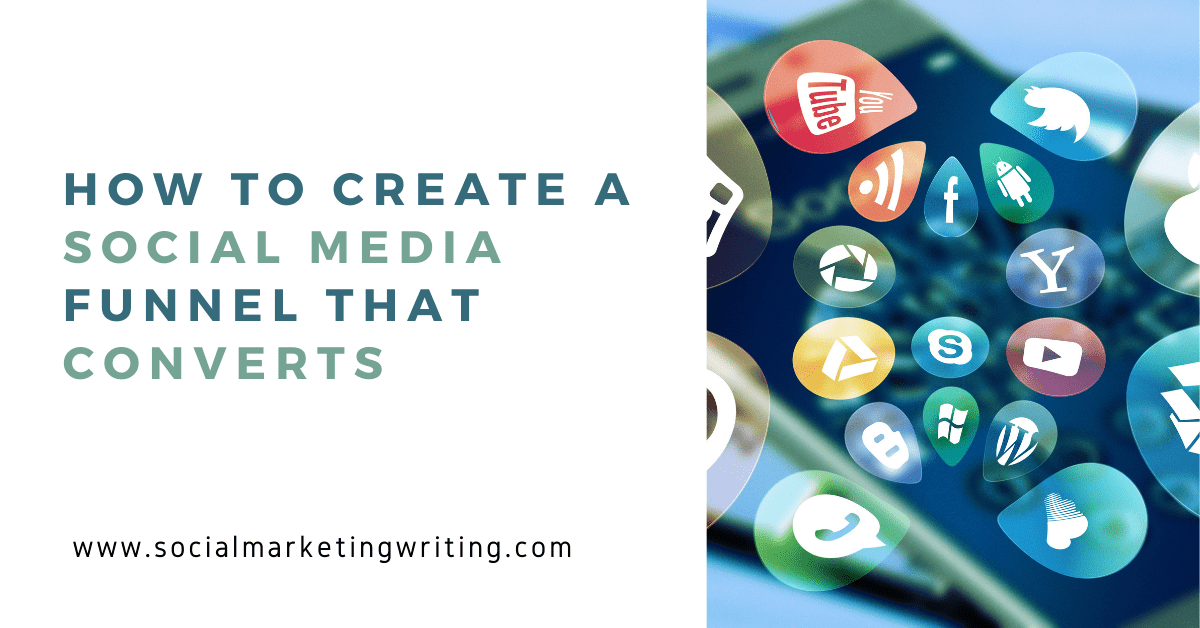
The post How to Create a Social Media Funnel that Converts appeared first on .
